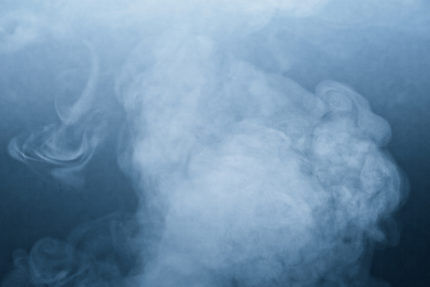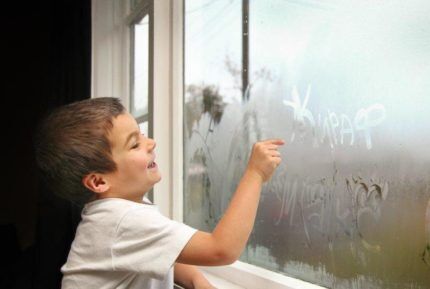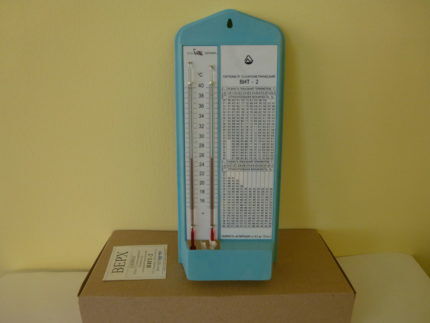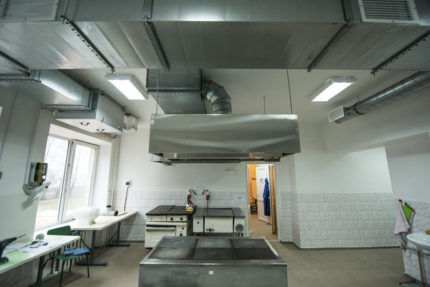Air humidity in educational institutions: legal requirements and standards
We try to choose the best, high-quality and healthy for our children, regardless of their age.But in addition to healthy eating, educational toys and decent education, it is necessary to pay attention to their environment. And, if the most basic parameters - temperature and air quality - are almost always observed in schools, colleges and kindergartens, then air humidity in educational institutions may not always meet the standards.
But how do you find out which indicators are optimal, how to monitor their compliance and maintain the healthy well-being of a child at any age?
We will talk about the basic sanitary standards established at the legislative level and share recommendations from medical professionals on how to best protect your children from an uncomfortable microclimate outside the home.
The content of the article:
Humidity standards in educational institutions
The exact values of the humidity regime in educational institutions are determined by GOST 30494-2011 “Residential and public buildings. Indoor microclimate parameters."
Judging by the table from this document, rooms for recreation and study should have an optimal air humidity of 45-30%, but it is possible to increase the specified standards to 60%. Moreover, in any institution from a preschool educational complex to high school.

However, everything is not so simple. The parameters of an ideally comfortable environment are built in a complex: humidity + air temperature + air speed. And only in a single ensemble do they create the necessary microclimate in the room.
But in order to know what we are talking about in general and understand where humidity comes from, let’s look at this point in more detail.
The concept of relative air humidity
So, from the physics course we know that the subject of conversation can be based on absolute and relative magnitude. True, few people remember what it is and how these two concepts differ from each other.
The air we inhale and exhale is a composite puzzle of gases and water vapor. Water vapor density is the absolute humidity contained in 1 cubic meter. meter of air.
The density of water vapor is calculated using a simple formula:
p = m (steam):v (air), Where
m is the mass, and v is the volume of air in 1 cubic meter. m.

On the one hand, the absolute value should be enough for a general idea of how much water is contained in the gas we inhale, but in fact, it turned out that organisms perceive it differently, that is, relative to the possible value of air saturation.
Calculated using the formula:
φ = (p: pH) x 100%, Where
p is the density of water vapor, and pH is the density of saturated vapor at a given temperature.

This is how a definition familiar to everyone appeared, which, as we see, is directly related to the ambient temperature and namely the relative air humidity in kindergarten, school and other educational institution is standardized according to the standard.
Why are humidity standards so important?
A child spends 4 to 8 hours a day in an educational institution, and sometimes more. This is enough for indoor air to affect health.
Reduced humidity contributes to drying of the mucous membranes of the eyes and nose, which means it creates a bridge for viruses and bacteria. In addition, excessively dry air carries more dust, which can trigger asthmatic attacks and bronchospasms.
In severe cases, dry skin and hair, dehydration of the body, and impaired thermoregulation of the body appear.

As a result of all these factors, sanitary standards and GOST standards for the parameters of relative air humidity in premises for various purposes in educational institutions were developed, as part of a comfortable microclimate.
Methods for measuring air humidity
There are also certain rules for measuring humidity indicators.
Measurements are taken special devices, hygrometers, in the center of the room at a height of 110 cm from the floor level. Moreover, if they are carried out manually, there must be at least 3 control recordings of readings with an interval of 5 minutes.
If automatic registration occurs, measurements are carried out over 2 hours.
You can also visually identify violations. For example, you can pay attention to the windows. When humidity is high, condensation forms on them, since double-glazed windows act as cold bridges. Accordingly, excess moisture will be indicated mold and drips.
But in general, even without special indicators, moisture or dryness is felt immediately.

As you can see, the tables above indicate the optimal and acceptable humidity values. Optimal - 45-30%, acceptable limit - 60%. Why such a spread?
Optimal humidity indicators represent the most comfortable values for a person, contributing to the best mental and physical performance, and are completely safe for health and life.
Acceptable indicators are the so-called limit, in which a slight discomfort and decreased performance may be felt, but at the same time, for some reason - engineering or financial - it is not possible to provide an optimal mode at the moment or for a long time.
Why is the humidity not up to standard?
In educational institutions, they are required to strictly monitor microclimate indicators, especially since children study there and, accordingly, parental supervision is a big question.
Adults are responsible for other people's children - managers, teaching staff, educators.

Violations of humidity parameters, as one of the most important parts of the microclimate, are a fairly common phenomenon.
Why does this happen? Let's look at the standard reasons:
- Poor ventilation - due to contamination of the ventilation, improper design of the air exchange system, or due to its ill-conceived number of people.
- The heating system does not meet standards, which causes increased or decreased dryness.
- Unregulated number of people in the premises, exceeding the established one.
- Poor insulation of the building, cracks and other structural defects.
- Emergency engineering communications.
- Violation of sanitary standards in the dining room.
- Problems with proper ventilation of rooms.
- Unscrupulousness of managers, where there is a mechanical incentive for the purpose of saving
These and some other reasons contribute to an increase or decrease in humidity.
Let's consider how ventilation is designed in educational institutions and how it is used to achieve an optimal microclimate.
Ways to maintain optimal humidity
The microclimate, as already mentioned, consists of several elements and they are closely interrelated. Optimal humidity can be adjusted or spoiled using temperature conditions and air exchange.
Let's look at how things are going with the ventilation of schools and colleges.

So, indoor ventilation is almost always supply and exhaust. Inflow is equipped with mechanical ventilation in schools where there are more than 200 students, and at the same time it is combined with natural ventilation in a single air exchange.
Natural ventilation is provided in each room and is carried out through corridors and ventilation.
When installing air heating combined with a ventilation system, automatic control is required, which allows maintaining proper temperature parameters from 15 degrees and humidity from 30 to 60% during school hours.
Exhaust ducts, as a rule, are designed from those rooms where there are no windows. In almost all rooms the ventilation sections are not combined.
As a rule, such a ventilation system design helps to control and eliminate excess/deficiency of humidity parameters.
Of course, it is very important to monitor temperature level and air exchange, timely ventilate rooms and check equipment, as well as its maintenance.
What to do if there is a problem with humidity?
If you somehow notice that the humidity parameters in an educational institution clearly do not meet the standards, it is not only possible, but also necessary to combat this.

Of course, if you have complaints, the first thing you should do is contact the school administration with a request to conduct an inspection and eliminate violations, if any. Submit the application in writing, in 2 copies - one will remain with the secretary or the director immediately, the second, after signing the acceptance, will remain with you.
If the violations have not been eliminated and you believe that the health of students is being damaged due to high/low humidity, you should submit a written complaint (again in 2 copies) to the municipal agency that controls the activities of the school in your area or region.
Please note that the complaint must be signed by you personally or written collectively, with the signatures and transcripts of the other parents. Anonymous complaints will not be considered.
Here sample complaint about school to municipal authorities or Rospotrebnadzor.
As a rule, inspections are carried out immediately and those found guilty are punished with fines.
Conclusions and useful video on the topic
How to protect your child not only at school, but also at home from microclimate violations.Advice from Dr. Komarovsky:
So, we have examined the standard parameters of humidity conditions in educational institutions. Fortunately, most often they are observed impeccably, which contributes to the formation of a healthy educational process.
But, even if you think that the rights of students are being violated, now you know how to correct this fact in any case and maintain their health, as well as ensure a comfortable pastime.
Write your comments, ask questions about the topic of the article - the contact block is located below.



